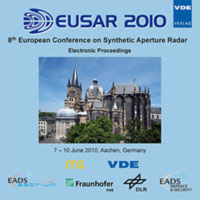A New Method for High Resolution Polarimetric SAR Data Classification Based on the M-Box Test
Conference: EUSAR 2010 - 8th European Conference on Synthetic Aperture Radar
06/07/2010 - 06/10/2010 at Aachen, Germany
Proceedings: EUSAR 2010
Pages: 4Language: englishTyp: PDF
Personal VDE Members are entitled to a 10% discount on this title
Authors:
Formont, Pierre; Ovarlez, Jean-Philippe (ONERA, DEMR/TSI, BP 72, 92322 Chatillon Cedex, France)
Formont, Pierre; Ovarlez, Jean-Philippe; Pascal, Frédéric (SONDRA / Supélec, 3 rue Joliot Curie, 91192 Gif-sur-Yvette Cedex, France)
Vasile, Gabriel (GIPSA-Lab, 961 rue de la Houille Blanche, BP 46, 38402 Grenoble Cedex, France)
Ferro-Famil, Laurent (IETR, Campus de Beaulieu, 263 Av du Général Leclerc, 35042 Rennes Cedex, France)
Abstract:
Polarimetric radar backscattering is classically modeled as a multivariate Gaussian process. However, PolSAR data sets acquired by recent sensors with high resolution performance show some clutter heterogeneity, whose handling requires higher order representations. In this paper, the statistics of textured polarimetric images are modeled as a SIRV process. The comparison of the performance of the SIRV with respect to the classical Wishart distribution for the classification of real polarimetric SAR data clearly illustrates the strong sensitivity of the Wishart classification to the texture information, i.e. the backscattered intensity. In order to overcome this dependency, a new algorithm, based on the M-Box test, is proposed to classify pixels solely from their polarimetric properties.


